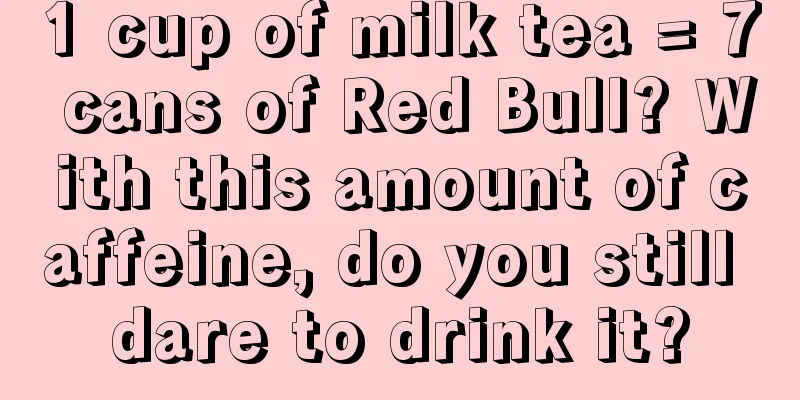How to brew freshly ground coffee beans

Key factors in selecting high-quality freshly ground coffee beansChoosing high-quality freshly ground coffee beans is the first step to making delicious coffee. The type of beans, origin, and roasting degree all directly affect the flavor of the final coffee. First of all, the type of beans is crucial. Arabica beans and Robusta beans are the two main types of coffee beans, of which Arabica beans are popular for their delicate taste and rich flavor, while Robusta beans are known for their strong flavor and higher caffeine content. Choosing the right bean variety according to personal taste is the basis for enjoying high-quality coffee. Origin is also an important factor that affects the flavor of coffee. Coffee beans from different origins have unique flavor characteristics. For example, Colombian coffee beans are known for their balanced acidity and sweetness, while Ethiopian coffee beans are known for their floral and fruity aroma. Knowing the origin of the beans can help you choose a flavor profile that suits your personal preferences. The degree of roasting determines the depth of flavor and taste of the coffee beans. Roasting degrees range from light roasted to dark roasted, with light roasted coffee beans usually retaining more of the original flavor, while dark roasted beans have rich caramel and chocolate flavors. Choosing the right roasting degree can make the coffee better suit your taste preferences. In summary, choosing high-quality freshly ground coffee beans requires comprehensive consideration of the type, origin, and roasting degree of the beans. By understanding these factors, you can better choose coffee beans that suit your taste, thereby improving the overall flavor experience of coffee. The impact of coffee grinding fineness on flavor and uniformityThe fineness of the ground coffee beans has a profound impact on the taste and flavor of the coffee. Generally speaking, the grind fineness of coffee beans is divided into three types: coarse grind, medium grind and fine grind, and each grind is suitable for different brewing methods. For example, coarse grind coffee beans are often used in French press pots because the larger particles can release a balanced flavor during a long steeping period; while fine grind is suitable for espresso machines because it can fully extract the strong flavor in a short time. Choosing the right grind size depends not only on your brewing method, but also on your personal taste. If you like your coffee strong, you might prefer a finer grind, while if you prefer a lighter taste, a coarser grind might be more appropriate. Different grind sizes affect the rate at which the coffee is extracted, which in turn affects the final flavor and taste. Ensuring that your grind is uniform is critical to achieving the desired coffee flavor. Uneven grinds can cause some areas of the coffee to be over-extracted and others to be under-extracted, creating an unbalanced taste. Using a high-quality coffee grinder and checking its grind regularly can help keep your grind consistent, ensuring that every brew achieves the desired flavor. In short, by understanding the impact of different grinding finenesses on coffee brewing, choosing the appropriate fineness and ensuring the uniformity of grinding, you can effectively enhance the flavor experience of coffee and make every cup of coffee fully display its unique charm. Optimizing water temperature and water quality for coffee extractionWater temperature plays a vital role in the coffee extraction process. The ideal brewing water temperature is generally between 90-95 degrees Celsius. Too high a water temperature may cause over-extraction of the coffee, resulting in a bitter taste, while too low a water temperature may result in incomplete extraction and insufficient coffee flavor. Therefore, mastering the correct water temperature helps achieve a balanced coffee flavor. After choosing the right water temperature, the choice of water quality should not be ignored. Using clean filtered water can effectively remove impurities and odors in the water, which is essential to maintaining the pure flavor of coffee. Chlorine or minerals in tap water may negatively affect the flavor of coffee, so using filtered or bottled water is a good way to improve the taste of coffee. In addition, the mineral content in the water will also affect the flavor of the coffee. Too high or too low a mineral content may affect the extraction effect and taste of the coffee, so using a water source with a moderate mineral content can help ensure a more stable and balanced flavor of the coffee. In summary, appropriate water temperature and high-quality water are the key to making high-quality coffee. By controlling the water temperature between 90-95 degrees Celsius and using filtered water, the flavor of the coffee can be significantly improved, allowing each cup of coffee to achieve the best taste and aroma. Adjust the coffee to water ratio for the ideal tasteThe ratio of coffee to water is crucial to the strength and flavor of your coffee. Different brewing methods require different ratios to achieve the best taste. For example, drip coffee usually recommends using 10-12 grams of coffee powder for every 180 ml of water, which can produce a balanced flavor. For users who like strong coffee, the amount of coffee powder can be slightly increased. When using a French press, the recommended ratio is 15-18 grams of coffee powder for every 250 ml of water. This ratio can effectively extract the rich flavor of the coffee beans while maintaining a moderate taste. If you like a stronger taste, you can increase the amount of coffee powder appropriately. The ratio for espresso machines is different, usually requiring 7-9 grams of coffee powder for every 25-30 ml of water. This ratio is suitable for making espresso, which has a relatively strong concentration and flavor. Depending on personal taste, the amount of coffee powder can be adjusted appropriately to obtain the desired concentration. Overall, by understanding the ideal ratio of coffee to water for different brewing methods and adjusting it to your personal taste, you can create a coffee that suits your preferences. Getting the ratio right will ensure that your brew achieves the desired flavor and taste every time. How to choose the right coffee brewing equipmentChoosing the right coffee brewing equipment is essential to making great coffee. Different brewing equipment has its own advantages and disadvantages, suitable for different needs and flavor preferences. For example, a filter cup (such as the V60) can make the coffee flavor clearer, suitable for people who like a lighter taste. However, a filter cup requires a certain skill to master the brewing time and water flow rate to obtain the best flavor. The French press is loved for its simple operation and rich flavor. It directly soaks the coffee powder with water, which better preserves the oil and subtle flavor of the coffee. However, the French press also has disadvantages, such as the coffee grounds are easily mixed into the liquid, which requires an additional filtering step. Coffee machines, such as drip coffee machines and espresso machines, are great for those who want convenience and consistency. Drip coffee machines can make multiple cups of coffee at once, making them ideal for home or office use. Espresso machines can make concentrated coffee quickly, making them great for those who prefer a stronger cup of coffee. However, coffee machines are often more expensive and require regular cleaning and maintenance. In short, choosing the right coffee brewing utensil depends on your personal taste preferences and lifestyle. Understanding the characteristics of various utensils and their impact on the flavor of coffee can help you find the brewing method that suits you best. The best way to keep coffee beans freshIn order to maintain the best freshness and flavor of freshly ground coffee beans, the correct storage method is essential. First of all, the storage environment should be kept dry, cool, and away from direct sunlight. Humidity and high temperature will accelerate the oxidation process of coffee beans, causing the flavor to decay quickly, so a stable temperature environment should be selected for storage. Choosing the right container is also key. It is recommended to use a well-sealed container, such as a glass jar or a plastic container, and ensure that it can effectively block air and light. Some advanced coffee storage containers are also equipped with a degassing valve, which can release the gas produced by the coffee beans during storage, further extending the freshness. The shelf life of coffee beans also needs to be taken into account. Although coffee beans can usually retain their flavor for several weeks after roasting, in order to obtain the best flavor, it is recommended to use them within two to three weeks after purchase. Storing them for too long will cause the flavor to deteriorate even under the right conditions. In short, by maintaining a suitable storage environment, choosing the right containers, and paying attention to the shelf life of coffee beans, you can effectively extend the use time of coffee beans and ensure that you can enjoy fresh, delicious coffee every time you brew. |
>>: What are the coffee bean producing areas of Kudi Coffee?
Recommend
Tips for making instant iced American coffee
The secret to making instant coffee iced American...
Discover the new flavor, the secret of Lobuv 2-in-1 coffee
Lobuv 2-in-1 coffee is a new flavor worth explori...
Explore the coffee journey and enter the world of SCA barista certification
Abstract: Entering the world of SCA barista certi...
Do coffee beans become more fragrant as they age? Have you ever tasted aged coffee?
We all know that aged cheese has a stronger flavor...
Which brand of coffee beans is not sour?
The formation and influencing factors of coffee b...
Do you still not know how to choose coffee beans? The three simplest ways to identify whether the coffee beans you buy are fresh in minutes
Nowadays, more and more people make their own coff...
The Deeper Meaning of the Coffee Emoji
The deeper meaning of the coffee emoji lies in th...
Americano, exploring the ingredients and unique production methods
American coffee is loved for its unique taste and...
Where does Kudi Coffee rank? Explore the brand's position in the coffee industry
Kudi Coffee's Position in the Coffee Industry...
Turkish coffee: exploring its ingredients and unique drinking methods
Turkish coffee is a traditional drink originating...
Explore the journey of taste buds, in-depth analysis of coffee bean brands
Explore the journey of taste buds, this article d...
Coffee beans are brewed directly, the original flavor is incomparable
Direct brewing of coffee beans Coffee is a popula...
Drinking too much coffee makes you uncomfortable, these remedies will help you recover
Drinking too much coffee may cause discomfort, su...
How to understand the quality of coffee beans
The main varieties of coffee beans and their flav...
Excessive coffee intake, hidden health risks
Excessive coffee consumption may bring a series o...









